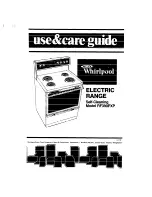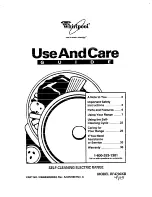
OVEN OPERATION
When using the appliance for the first time, the oven and broiler burners should be
turned on to burn off any manufacture oils. See ‘BEFORE FIRST USE’ for further
details.
WARNING: Oven Vent
Do not block the Top Vent of the range, nor the ducts of the door for cool air intake
and exhaust. It is important that the flow of hot air from the oven and fresh air into
the oven burner never be interrupted. Avoid touching the vent opening or nearby
surfaces during oven or broiler operation – they may become hot.
WARNING: Oven Internal Air Flow
Never cover any slots, holes or passages in the oven bottom or cover an entire rack
with materials such as aluminum foil. Doing so blocks air flow through the oven and
may cause carbon monoxide poisoning.
WARNING: Aluminum Foil
Do not use aluminum foil or other material to line the oven floor or side walls or any
other porcelain surface. Failure to adhere to this notice will damage the porcelain
interior. Further, the aluminum foil traps heat and may create a fire hazard.
BEFORE USING THE OVENS
OVEN FUNCTIONS
CONVENTIONAL / NATURAL AIR FLOW - OVEN 1 & OVEN 2
Both ovens, small and large, operate as conventional ovens. Heat is transferred into
the oven from the heating element in the bottom of the oven cavity. Heat is then
circulated by natural airflow. This is a traditional bake setting.
Conventional cooking is best for less tender cuts of meat that should be covered,
covered one-dish recipes, and pizzas.
To prevent any issue with over or under-cooked food, rotate your pans throughout
the baking time.
●
Operation
To set the oven temperature, press and turn
the oven control knob
counterclockwise
to
the desired temperature. The oven indicator
light illuminates and preheat begins.
Oven 1 – Up to 450°F
Oven 2 – Up to 500°F
25










































